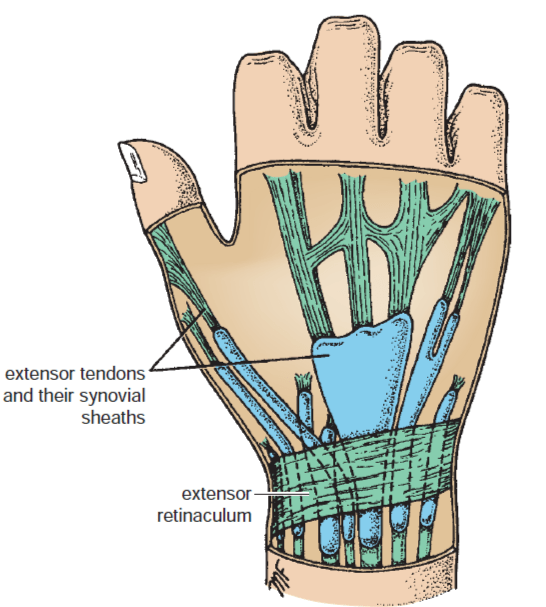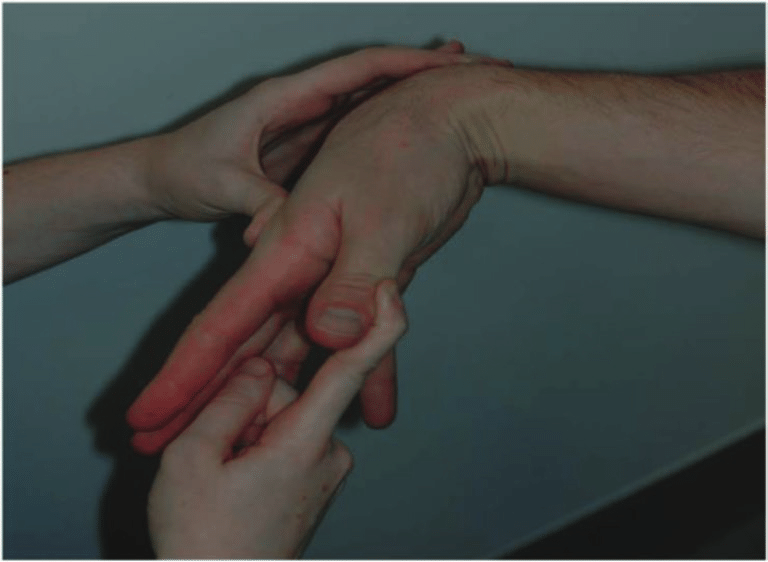De Quervain’s Disease (Tenosynovitis)
content of this page
1- Introduction
2- Anatomical Overview
3- Treatment
4- purposes
Introduction
is a painful condition that affects the tendons on the thumb side of your wrist. It occurs when the tendons around the base of the thumb become irritated or constricted, leading to swelling, pain, and difficulty moving the thumb. This condition is named after the Swiss surgeon Fritz de Quervain, who first described it in 1895.

Anatomical Overview
De Quervain’s tenosynovitis affects the tendons at the base of the thumb where they pass through a tunnel-like structure called the extensor retinaculum. To understand this condition better, let’s review the anatomy of the wrist and thumb:
Tendons: Tendons are fibrous tissues that connect muscles to bones. In the case of De Quervain’s tenosynovitis, two tendons are primarily affected:
- Abductor pollicis longus (APL) tendon: This tendon helps move the thumb away from the palm.
- Extensor pollicis brevis (EPB) tendon: This tendon assists in extending (straightening) the thumb.
Extensor Retinaculum: This is a band of tissue that holds the tendons close to the wrist and prevents them from bowing out when the thumb is in use.
Synovial Sheath: Tendons are surrounded by a protective covering called the synovial sheath, which produces synovial fluid to reduce friction during tendon movement.
Intersection: The APL and EPB tendons cross over each other as they pass through the tunnel formed by the extensor retinaculum.

Treatment
Treatment for De Quervain’s tenosynovitis aims to reduce pain and inflammation, improve thumb and wrist function, and prevent recurrence. The specific approach depends on the severity of the condition, but common treatments include:
Rest and Immobilization: Resting the affected hand and avoiding activities that aggravate the condition can help reduce inflammation. Immobilization with a splint or brace to limit thumb and wrist movement may be recommended, especially at night.
Ice Therapy: Applying ice packs to the affected area can help reduce swelling and pain. It’s typically recommended to apply ice for 15-20 minutes several times a day.
Pain Medication: Over-the-counter pain relievers like ibuprofen or acetaminophen can help reduce pain and inflammation. In some cases, your doctor may prescribe stronger medications.
Corticosteroid Injections: Injecting a corticosteroid medication into the tendon sheath can help reduce inflammation and provide relief from pain. However, repeated injections may weaken the tendon, so they are typically limited to a few times.
Physical Therapy: Specific exercises can help improve the strength and flexibility of the thumb and wrist, reducing symptoms and preventing recurrence.
Activity Modification: Avoiding activities that strain the thumb and wrist or using ergonomic tools can help prevent recurrence.
Surgery: If conservative treatments fail to provide relief, or if the condition is severe, surgery may be recommended. The surgery involves releasing the affected tendons to reduce pressure and allow them to move more freely.
Purposes
The purpose of treating De Quervain’s tenosynovitis is to alleviate pain, reduce inflammation, and improve the function of the thumb and wrist. By addressing these issues, treatment aims to enhance the individual’s quality of life, allowing them to perform daily activities with less discomfort and limitation.